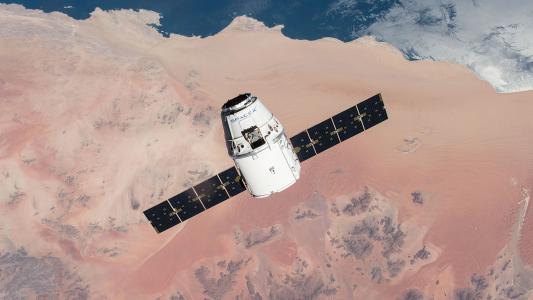Artificial retinas made in space appear to be better than retinas made on Earth — suggesting that a cure for a leading cause of blindness could be one of the first products manufactured on tomorrow’s commercial space stations.
Vision 101: After light enters the eye, it travels to the retina — a thin layer at the back of the organ — where light-sensitive cells called photoreceptors convert it into electrical signals. The signals are then sent on to the brain for interpretation.
Many eye diseases damage photoreceptors, leading to vision problems or even blindness. They affect millions of people, and there are no known treatments for the most common ones: retinitis pigmentosa and age-related macular degeneration.
Even a force as light as the pull of gravity during manufacturing can lead to imperfections.
Artificial retinas: Connecticut startup LambdaVision is using a light-activated protein, called “bacteriorhodopsin,” to build artificial retinas. The hope is that the devices will one day restore vision in people with retinal degeneration by filling in for their damaged photoreceptors.
“Activated by light entering the eye, the artificial retina pumps protons toward the bipolar and ganglion cells,” explains LambdaVision CEO Nicole Wagner. “Receptors on those cells detect the protons, which triggers them to send signals to the optic nerve, where they travel to the brain.”
Space build: Each of the artificial retinas contains 200 layers of the protein on a mesh membrane. The more uniform these layers are, the better the implant should work, but even a force as light as the pull of gravity during manufacturing can lead to imperfections.
In pursuit of flawless protein layers, LambdaVision decided to explore the feasibility of manufacturing its artificial retinas in space, the hope being that the microgravity environment on satellites would lead to a better product.
The company teamed up with Space Tango, a space-based research firm, to design an experiment using one of its CubeLabs, boot-box-sized containers packed with all the automated systems needed to perform experiments with near-real-time input from Earth.

Backed by a $5 million commercialization grant from NASA, it sent its first CubeLab to the International Space Station (ISS) in 2018, and four others have followed.
“[We’re looking at] how do you make this as reproducible and as high quality as possible,” said Wagner.
The fifth CubeLab has now returned to Earth, and according to LambdaVision’s initial analysis, the 200-layer films in it were more uniform than the controls they created on Earth.
This fifth experiment was also the most autonomous yet — while LambdaVision’s researchers had to frequently intervene with early CubeLabs, this tech inside this one produced the films almost entirely on its own.
Looking ahead: Each microgravity experiment has aided LambdaVision in its goal of meeting the FDA’s manufacturing standards for its artificial retinas by the end of 2023, and it already has three more CubeLabs scheduled to arrive at the ISS in the next year.
“We’ve made a lot of progress, but there’s still work to be done,” said Wagner. “We’re continuing to look at the parameters, we’re continuing to develop these assays. But having made the 200-layer film in microgravity is a big milestone.”
“The ISS is a research lab. Commercial space stations will have more capabilities.”
Nicole Wagner
LambaVision hopes to have its artificial retinas ready for trials involving patients with advanced retinitis pigmentosa in 2024. If those go well, trials to treat age-related macular degeneration would follow.
Ultimately, it plans to work with commercial partners to manufacture the implants in space.
“There’s a lot of promise in continuing to do this work in a microgravity environment,” Wagner told the Financial Times. “But the ISS is a research lab. Commercial space stations will have more capabilities. They will be designed with the future in mind.”
We’d love to hear from you! If you have a comment about this article or if you have a tip for a future Freethink story, please email us at [email protected].






